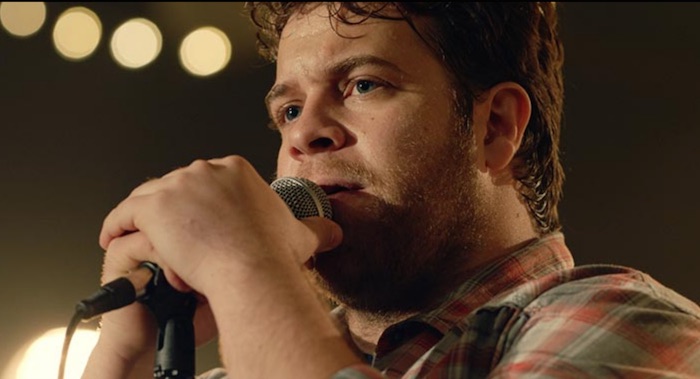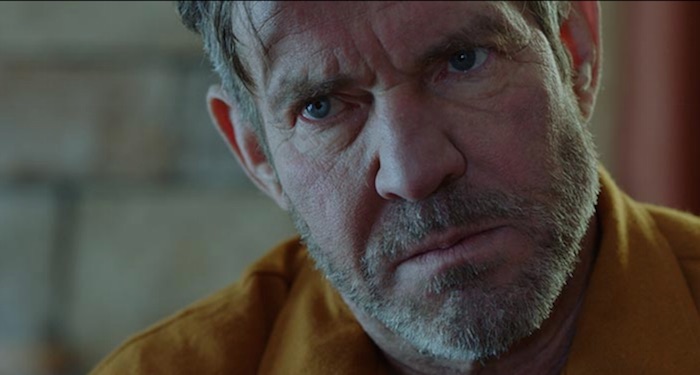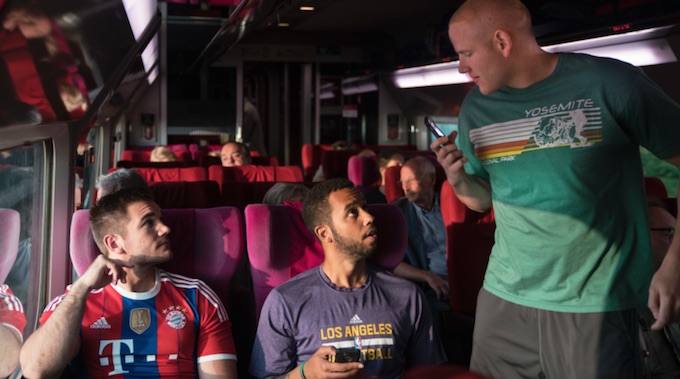UNFROSTED
 Thursday, May 2, 2024 at 6:35AM
Thursday, May 2, 2024 at 6:35AM
Stars: Jerry Seinfeld, Melissa McCarthy, Amy Schumer, Jim Gaffigan, Hugh Grant, James Marsden, Dean Norris, Jon Hamm, Sarah Cooper, John Slattery, Maria Bakalova, Max Greenfield, Mikey Day, Kyle Mooney, Peter Dinklage, Christian Slater, Bill Burr, Dan Levy, Thomas Lennon, Jack McBrayer and Bobby Moynihan.
Writers: Jerry Seinfeld, Spike Feresten, Barry Marden, Andy Robin.
Director: Jerry Seinfeld
Rating: ★ ★ ★ ★

For die-hard fans of the series Seinfeld, there is a clear point of distinction in the show’s creative trajectory in the wake of co-creator Larry David’s season 7 departure. As we’ve come to understand, David is a master of snark and bitterness that plays hilariously within his lead character’s jaded world perspective, as well as being brilliant at narrative construction. His buddy Jerry, on the other hand, likes things lighter and sillier, and that’s what Seinfeld became under the stand-up’s guidance - ‘The Contest’ is the classic David/Seinfeld mash-up; the one where George naps under his desk, that’s all Jerry.
I never loved seasons 8 or 9 (aka, ‘The Jerry Years’), but I’m going to take a weekend to rewatch them having seen Unfrosted, the new Netflix feature that affords Seinfeld’s silly side unbridled freedom. Very loosely inspired by the origin story of America’s favourite breakfast baked good, the Pop-Tart (see the real-world timeline here), Unfrosted unleashes ‘Jerry Seinfeld, auteur’ and the result is one of the most wholly enjoyable movie-watching experiences in recent memory. Silly as a clown car, of course, and no less bursting with giggly energy.

Seinfeld directs, co-writes and stars in Unfrosted as Bob Cabana, the marketing/R&D guru at Kelloggs in 1963, a moment in time when the cereal giant dominated the first-meal-of-the-day market. Alongside CEO Edsel Kellogg III (Jim Gaffigan), Cabana’s life is one of success-after-success; he dreams of the perfect American lawn and sending his kids to the kind of elite college that charges $200 in annual fees. But there is a cloud over his upper middle-class dreams; a cloud, in the shape, of a fruity gelatinous-filled treat in development at Kellogg’s competitor, Post.
Under highly-strung and devious boss Marjorie Post (Amy Schumer), the underdog outfit plans to gazump Kelloggs with their new breakfast line, changing forever the war for America’s early-morning counter space. Cabana gets a sniff of Post’s pastry plans and snaps, crackles and pops into action, rehiring eccentric cereal visionary Donna Stankowski (Melissa McCarthy) to share in the uphill battle to rush-launch their own sugar-filled breakfast super-sandwich.
This is the framework upon which Jerry Seinfeld (not averse to the pleasures of a milky bowl of grain-based crunch, as fans of his series know) constructs his pastel pastiche of early-60s ephemera, all the while exhibiting an inspired degree of nuttiness that recalls the Zucker-Abrahams-Zucker oeuvre with a splash of Pee Wee Herman-esque alternate realism. The sweet, bright palate envisioned by veteran DOP Bill Pope harkens back to 1995’s Clueless, where his lovely eye for colour and texture added immeasurably to that film’s endearing, enduring qualities.

The parade of Seinfeld’s comedy sector buddies is too numerous to mention, suffice to say that, quite remarkably, none hit a bum note, with each delivering a vivid characterisation and/or some perfectly-pitched laughs. That said, it might be the cast’s loftier acting names, among them Peter Dinklage, Christian Slater and especially a grrreat Hugh Grant, who all but steal the show.
Also remarkable are the occasional issue-based moments that Seinfeld and his seasoned writing team of Spike Feresten, Barry Marden and Andy Robin (all collaborators on Seinfeld) work into the mix. At various points, Unfrosted tackles in its own amusing way Big Business’ shady dealings with international influences; the never-not-relevant gender divide in America’s boardrooms; and (and I can’t believe I’m saying this), the poisonous hive-mind that led to the January 6 insurrection riots.
Unfrosted represents the work of a filmmaker aligned with his narrative’s period and people as filtered through a finely-honed understanding of comedic beats. While it is perhaps too sweet a confection to suggest that this was the film that Jerry Seinfeld was born to make, it clearly captures a storyteller who delights and excels at exquisite embellishment. Seinfeld has finally, even triumphantly, emerged from under the weight of his own name, with a work of superb silliness.
 Comedy,
Comedy,  Jerry Seinfeld,
Jerry Seinfeld,  True Story
True Story 















